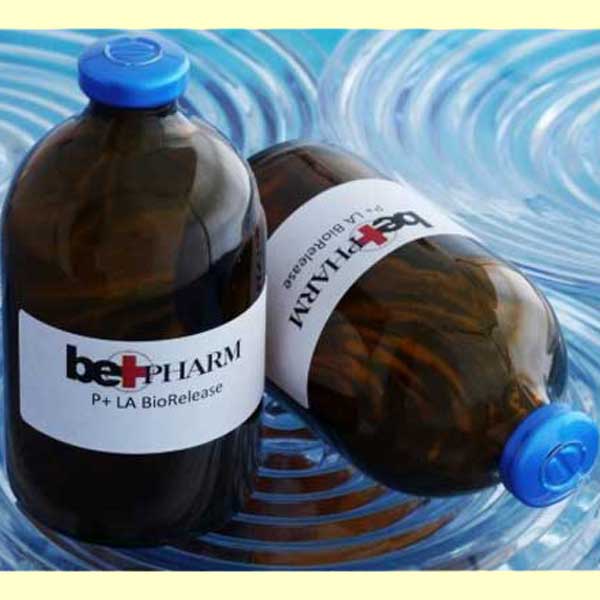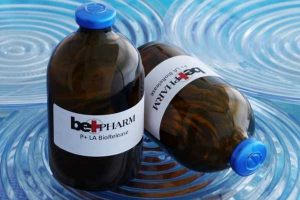Progesterone and Estradiol
There are times when it is desirable to cause a mare to enter estrus and ovulate within a specific time period. It may be that frozen semen is being used, when the “window of opportunity” for insemination leading to conception is limited; it may be that the stallion or mare is only available during a certain period due to showing or other commitments; or one may be “synchronizing” mares for insemination with a single shipment of semen, a “split ejaculate” on-farm, or with a view to carrying out embryo transfer. Progesterone and Estradiol offers the best way to achieve this timing control.

P&E Treatment Timing for Both Daily and Biorelease Formulations – Note this also shows the optional two-day microdose Prostaglandin treatment to avoid unpleasant mare side-effect which can be used in either protocol.
A more detailed discussion of general hormonal manipulation of the mare to establish estrus can be obtained by viewing the article about monitoring and manipulating estrus, but the use of the combined steroids progesterone and estradiol (or “P & E”) is the accepted method for maximum control1, 2, 3. While progestins alone are routinely used (e.g. Regumate™), they will not necessarily control follicular development and it is possible to have ovulations occurring during treatment, or large pre-ovulatory follicles present at the end of treatment, either of which will result in unpredictable timing of estrus and ovulation. The addition of the estrogen provides greater ovarian control, resulting in a more accurate pinpointing of ovulation following treatment. An additional advantage is that because there is this degree of control over ovarian activity, P&E can be started anywhere in the mare’s cycle (as long as she is cycling) and produce predictable results in the majority of cases. It is not recommended for use prior to the first ovulation of the year, as prolonged anestrous may result in a few cases. This is of tremendous advantage in situations where there is not access to a teaser stallion, or with a mare that will not display estrus to a stallion.
P&E is normally presented as a course of 10 daily injections, with a dose of prostaglandin F2α being given at the same time as the 10th dose. To avoid the unpleasant side-effects often seen with the use of prostaglandin F2α, we have taken to using micro-doses (1/10th of the regular dose) two days in a row. When using P&E we treat with a 1/10th dose of prostaglandin F2α on days 9 and 10 of the P&E protocol and have seen no reduction in reliability of timing of ovulation. Estrus will usually commence in about 4 days time after the prostaglandin F2α treatment, and by day 18 overall from the start of the P&E treatment, 90% of mares will have a 35mm follicle present. Most will respond to hCG administration once this size is reached by ovulating within 36-42 hours. If the hCG is given in the morning of the 18th day, this results in 75-80% of mares ovulating in the evening of day 19 or early morning of day 20 of treatment. We have successfully induced estrus using an oral combination of these drugs with results very similar to the injectable, but further research is required as other researchers have suggested that neither hormone can be absorbed by the equine gut. It should be noted that other oral preparations of the product have not proven reliable in timing. Single-shot time-release preparations of the injectable version have been produced, but anecdotal evidence suggests that the pinpointing of ovulation is not as reliable with these preparations as with the daily injections. Intra-vaginal use has been suggested4 as producing predictable ovulation to almost the same degree as the daily injections, although there is a transient vaginitis that will typically resolve spontaneously prior to breeding.
It is essential that the hormones used are progesterone and estradiol 17β. There have been preparations produced by some compounding pharmacies that include estradiol cypionate or estradiol benzoate. These will not work with reliable results. The daily dosage for a 1,000-1,500 lb horse is 150 mg of progesterone and 10 mg of estradiol 17β. In personal communication from the researcher4, it was suggested that dosage levels should be proportionately increased for horses of a larger size.
Progesterone and estradiol is available from many compounding pharmacists, but it is essential that one is used familiar with the correct compounding formula. We have had good success using the products compounded by BET Pharm. A prescription from your veterinarian will be required to obtain this product. BET Pharm also produce a biorelease version of P&E, which is a single injection producing a sustained release over about 12 days. Additionally, they produce a biorelease version of altrenogest, the active synthetic progestin ingredient in Regumate. Either of these products (Biorelease P&E or biorelease altrenogest) can be used to produce a timely onset of estrus with a close to similarly tight pattern to the daily dose treatment of P&E, although we do recommend closer monitoring if available, as in some instances less-predictable patterns have been reported. If a less-predictable pattern occurs, this can usually be managed by varying the manipulation with the ovulation promoters. The advantages of a single injection over ten daily injections are obvious. As with the daily injections, mares receiving the biorelease formulations should also be treated with prostaglandin on the ninth day after initial day of treatment with the biorelease injections. As some mares have an adverse reaction to prostaglandin products (appearance of sweating and cramping 20-30 minutes after treatment) we have now taken taken to micro-dosing with prostaglandin on days 8 and 9 following the initial biorelease treatment (i.e. days 9 and 10 overall of treatment, as in the diagram above). With prostaglandin micro-dosing, mares are treated with 1/10th (one-tenth) of the usual dose, two days in a row. The onset of estrus will be in the same time frame as is seen with the full dose, but adverse reactions will be absent.
References:
1: Loy, R.G., Pemstein, R., O’Canna, D., and Douglas, R.H. 1981. Control of ovulation in cycling mares with ovarian steroids and prostaglandin. Theriogenology 15:191-200
2: Varner, D.D., Blanchard, T.L., and Brinsko, S.P. 1988. Estrogens, oxytocin and ergot alkaloids – Uses in reproductive management of mares. Proc. AAEP 219-241
3: Lofstedt, R.M. 1988. Control of the estrous cycle of the mare. The Veterinary Clinics of North America – Equine Practice, 189-190
4: Lofstedt, R.M. personal communication.
© 2004, updated 2011, 2021 Equine-Reproduction.com, LLC
Use of article permitted only upon receipt of required permission and with necessary accreditation.
Please contact us for further details of article use requirements.
Other conditions may apply.




